Combat ships. Cruisers. There were three nightmares ...
Yes, now we will go to the German shores and see what the heavy cruisers of the Admiral Hipper type were like, good story their appearance is already a good plot in itself.
In general, the construction of cruisers in imperial Germany was very simple: a basic model was created, and then each next type was a modernization with very minor changes. By the way, in Hitler's Germany everything was exactly the same as the example - the same cruisers of the "K" type.
The increase in speed and displacement was insignificant, the armament remained practically the same. However, the uniformity of the ships was a good price, as it made it possible to receive units from the same ships capable of performing combat missions.
After the defeat of Germany in the First World War, the situation did not change, except that the displacement of the cruisers was limited to 6 tons, and the artillery was 000 mm.
But the bell of London and Washington struck, and the restrictions affected all the leading maritime powers ... except Germany! And when all countries began to develop and build a new class of cruisers, heavy, with a maximum standard displacement of 10 tons, armed with artillery of the main caliber of 000 mm and a speed above 203 knots, Germany was not going to stand aside.
And the first step was the creation of the Deutschlands. "Pocket battleships" were so superior (in theory) in battle to "Washington" cruisers that they became a sort of sea bogeyman. The Deutschlands could not do only one thing with the Washingtonians - to catch up with them. But this was not required of the lone raiders.
Inspired by such success as the Deutschlands, which were really very peculiar ships, the leadership of the Kriegsmarine decided that it was time to recreate, if not the High Seas Fleet, then at least its likeness. And this will require not only battleships, but also cruisers. Including heavy ones.
And since German industry at that time was not capable of feats, the ships must be outstanding. That is, outnumber opponents by a head, or better by two.
And, after thinking well, having studied the documents on the French "Algeria" obtained by Admiral Canaris in time, the headquarters of Grand Admiral Raeder decided that the new heavy cruiser should be no worse than the "Algeria" in terms of weapons and armor, but be faster. On the stocks of the French, the Strasbourg and Dunkirk were already under construction, which, in theory, were supposed to become the funeral team for the Deutschlands and not particularly fast heavy cruisers.
And, of course, nobody canceled the idea of a single raiding on ocean communications.
And, although the Germans did not sign the terms of Washington and London, they still had to play according to world rules. That is, armament of eight 203-mm guns, armor, turbines, a speed of 32 knots, a range of 12 miles at a cruising course of 000 knots - all this had to be accommodated in 15-9 thousand tons of displacement.
Could it have been more? Easy. But there were already more - "Deutschlands". In addition, the probable opponents went with obviously higher speed (the Deutschlands have 28 knots on their diesels), but what's the point in a heavy cruiser that is not capable of catching up and destroying the target?
This was a normal heavy cruiser, not a lone pirate fighting against merchant convoys and individual transports. The enemy for a heavy cruiser is primarily a light cruiser, and then a heavy cruiser.
In general, "Deutschland-2" was completely useless. What was needed was an ordinary heavy cruiser. And Raeder's gang started working.
And no one in Germany was embarrassed that 203-mm guns were banned by the Treaty of Versailles. If you really want to, then you can. And eight 203-mm barrels really wanted. And I wanted more, but the Germans have not yet been able to make three-barreled towers for large calibers. And I wanted armor no less than that of the "Algeria", a belt of 120 mm and a deck of 80 mm.
In general, since Germany was not a signatory to the Washington Agreements, anything could be done. But the Versailles restrictions were much more serious than the Washington ones, but since Hitler decided to give a damn about them, what then can we say about the Washington ones?
There remained the question of price and performance characteristics, for there was no point in building an expensive and clumsy hulk. It was as if a heavy cruiser was being built, and not a battleship or a battleship. So the project had to be crammed into the same 10 tons.
And in 1934 the project appeared. Of course, they did not meet the promised 9-10 thousand tons, it turned out about 10 700 tons. The project speed was 32 knots, which is pretty average. Everything worked out with the weapons, but the booking ... The booking turned out to be noticeably weaker than that of the Algeria and even worse than that of the Italian Paul. Only 85 mm armor belt, barbets and traverses, and a 30 mm deck.
Raeder was furious when he saw the calculations and demanded to increase the frontal thickness of the turrets to 120 mm, and the armor belt to 100. The admiral wanted to see the deck 50 mm thick. But to want does not mean to be able. Alas.
However, armor protection is only half the battle. The other half is the power plant.
Diesel engines that were successfully applied at the Deutschlands were clearly not suitable here. Under diesel engines, the pickpockets developed a maximum speed of 28 knots, which was clearly not enough. Plus vibration and noise, which became a nightmare for the crew.
On the light cruisers of the "K" type, the idea of a combined installation was implemented: a turbine for combat use and a diesel engine for an economical course. The idea is interesting, but not without flaws.
On the new ships, the Kriegsmarine leadership decided that only a boiler and turbine unit would be installed. There were many justifying factors for this, the first of which was speed, and the second was the need to save weight wherever possible.
Since the heavy cruisers of the new type were not planned to be used primarily as raiders, the cruising range could be sacrificed. And they donated, the cruising range of the Hippers could not be compared with the range of the Deutschlands. 6 800 miles versus 16 300 - no options.
On March 16, 1935, Hitler finally sentenced all the Versailles Accords. The British very quickly realized that now simply chaos could begin, and quickly concluded a personal Anglo-German agreement, according to which Germany had the right to bring its naval forces to 35% of the British in each category of warships. Accordingly, Germany had the right to build 51 British long tons (T) heavy cruisers.
And immediately after the denunciation of Versailles, the laying of new ships took place. July 1935 - Blom und Voss launches Admiral Hipper. August 1935 - Deutsche Werke begins building the Blucher. April 1936 - Krupp launches Prince Eugen.
Seidlitz and Lutzov were laid down in December and August 1936 by the Deshimag company.
The names of the ships, in fact, are land-based, although the generals Walter von Seydlitz, Adolf von Lutzoff, Gebhard Blucher were constantly present in the names of the ships of the Kaiser fleet... Only "Prince Eugen" stood apart, the ship was named after the Austrian commander Prince Eugene of Savoy. A political step, they wanted to show the Austrians that they are the same as the Germans, a common history and so on.
There were many novelties in the design of ships characteristic of German shipbuilders. For example, the outer skin, which was fastened by welding, except for those zones where armor plates played its role, which were connected in the old fashioned way with rivets.
There was a very interesting device that distinguished the German cruisers. This is a passive roll stabilization system. In the hold, on the sides, there were two tanks, which contained about 200 tons of ordinary water. A special gyro system controlled the overflow of water from one tank to another, due to which the ship was to be leveled during rolling.
Due to this, the side roll of the ship should have decreased, respectively, the accuracy of the shooting should increase. True, there is no information about the actual operation of the system.
It is generally accepted that the crew quarters were not spacious and comfortable. To be honest, they were cramped and rather inconveniently located. And when, during the war, the number of the crew increased due to the same calculations of anti-aircraft installations, everything became very sad in general.
On the other hand, the originally planned medical unit was simply luxurious, with a surgical operating room, dental and X-ray rooms.
Another interesting solution was the bridge wings - long and narrow folding structures that made it possible to improve observation when maneuvering in ports.
In the open sea and in battle, the wings folded.
In combat conditions, the cruiser was supposed to be controlled from an armored conning tower, but the rest of the time the helm post was located in a small and cramped room above the front of the conning tower, the only advantage of which was a roof over the head of the steering and watch officers.
There was no steering wheel. Absolutely. 2 buttons at the helmsman, which correspond to the shift of the steering wheel to the right and left. And in the wheelhouse there was ... a periscope! But the periscope was not looking up, but down! He allowed the officer of the watch to examine the map, which was on the navigator's table one floor below.
Naturally, in the wheelhouse there were gyrocompass repeaters, a magnetic compass and ship communication equipment. In the conning tower everything was the same, even in a wider configuration.
At the very top of the bow superstructure, in the tower-like part, the meteorological cabin was located. The Germans paid attention to weather forecasts, so the meteorological post was not just empty words. And so that the ship's meteorologist did not have to get to the post for a long time, his cabin was placed next to the wheelhouse.
Let's move on to weapons.
Main caliber
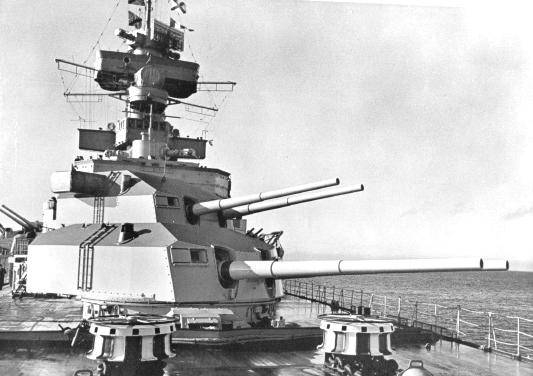
Eight 203 mm guns housed in four twin turrets, two at the bow and two at the stern. The Germans considered this location the most preferable from all points of view: a sufficient minimum number of shells in one salvo (four), minimum dead angles of fire and equal fire on the bow and stern.
Pretty logical. And if you consider that the Germans simply did not have three-gun turrets for 203-mm guns, then the old proven scheme was quite normal.
The towers of the K-class light cruisers were not suitable precisely because 203-mm guns required greater strength, and the towers of the Deutschland-class raiders for 283-mm guns were somewhat heavier than we would like. And the three towers of the cruiser would definitely not have pulled it.
Yes, it didn't look impressive, since 8 barrels against 9 for the French "Algeria" or 10 for the Japanese "Takao" or the American "Pensacola" is not enough. On the other hand, 4 x 2 was a very common scheme among the British and Italians, and never mind, they fought.
German guns were guided horizontally by electric motors, vertically - using electrohydraulic drives. To load the gun, it had to be installed at an elevation angle of 3 °, which reduced the rate of fire at long distances due to the fact that lowering the barrel to the loading position and then raising it to the desired angle took time.
The practical rate of fire was about four rounds per minute instead of the originally intended six. But the British cruisers had the same problem, because the rate of fire did not exceed the same 5 rounds per minute.
The SKC / 34 gun itself was excellent. This was the latest development from Krupp. A 122-kg projectile flew out of the barrel with an initial speed of 925 m / s. Better performance among the guns of that time was possessed only by the Italian, which had an initial speed of 940 m / s with approximately the same projectile weight. However, the accuracy and survivability of the Italian gun left much to be desired.
The Krupp engineers managed to find a middle ground. On the one hand - good trajectory and accuracy, on the other - barrel resource of 300 shots.
The Hipper-class heavy cruisers were excellently equipped with various types of shells. More precisely, there are four types:
- armor-piercing projectile Pz.Spr.Gr. L / 4,4 mhb with bottom fuse and ballistic tip;
- semi-armor-piercing projectile Spr.Gr. L / 4,7 mhb, also with bottom fuse and ballistic tip;
- high-explosive Spr.Gr. L / 4,7 mhb without a special ballistic cap, instead of which a fuse with a small deceleration was installed in the head;
- lighting shell L.Gr. L / 4,7 mhb also with ballistic tip.
An armor-piercing projectile, equipped with 2,3 kg of explosives, could penetrate a 200-mm armor plate at a distance of up to 15 m, and 500-120-mm side armor, which constituted the protection of most cruisers in other countries, could penetrate at almost any real battle distances when fighting on parallel courses.
Normal ammunition consisted of 120 rounds of all types per gun, although the cruisers could receive 140 without any problems, and the entire cellars contained 1308 armor-piercing, semi-armor-piercing and high-explosive, as well as 40 lighting, included in the ammunition of only elevated towers.
Anti-aircraft weapons
The cruisers each had 6 two-gun 105-mm C / 31 (LC / 31) mounts, which provided fire from 6 barrels in any sector.
The installations of the station wagons were also very advanced, if not unique for that time. They had stabilization in three planes, not a single cruiser in the world possessed such installations. In addition, if we add to this the possibility of remote control of guns from artillery fire control posts ...
There were also disadvantages. First, the electrification of the towers, which did not treat salt water very well. Secondly, the installations were open, and the calculations were not protected from above from shrapnel and everything else.
37-mm automatic cannons model SKC / 30 were placed in single and twin and also stabilized installations. The presence of gyro stabilization and manual control is a good step forward from Rheinmetall. Yes, the British Quad Vickers and Bofors had a higher fire density. But the German guns were more accurate.
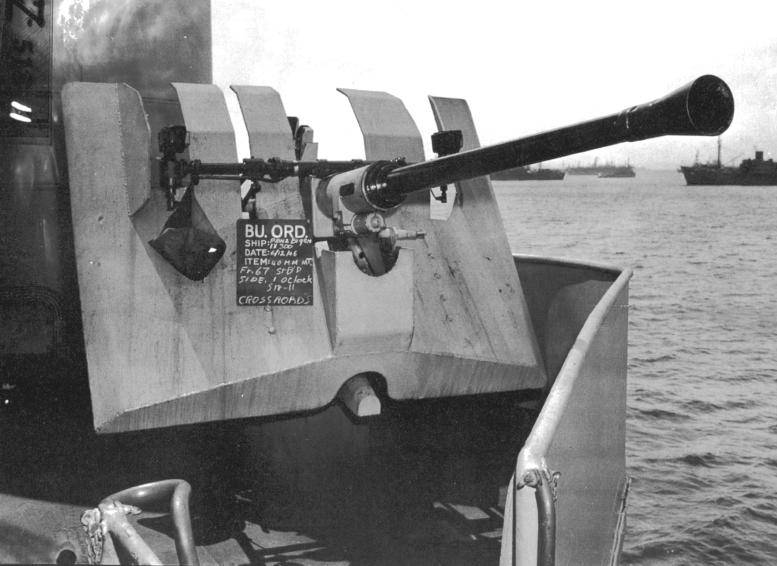
The 20mm anti-aircraft guns were perhaps the only weak link. The allies' Oerlikons were twice as fast as the Rheinmetall, and even the German machine gun required 5 crewmen versus 2-3 for the Oerlikon.
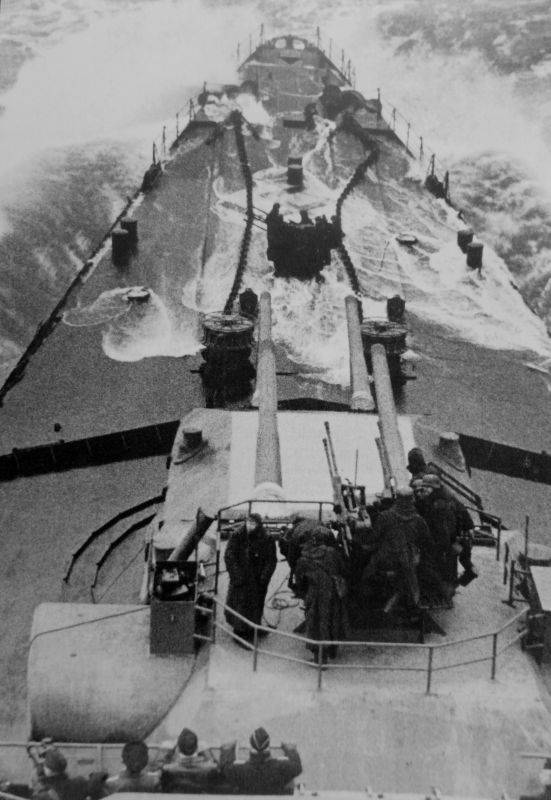
Torpedo armament
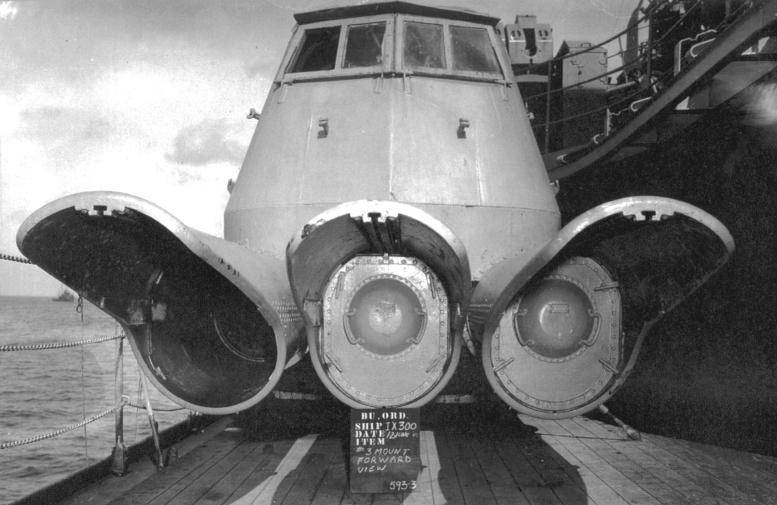
In general, on the cruisers of that time, torpedoes were considered as some kind of additional armament, so many devices were not installed. On average 6-8, and they often filmed. We do not take into consideration the Japanese cruisers here, the Japanese torpedoes were generally part of the attack doctrine.
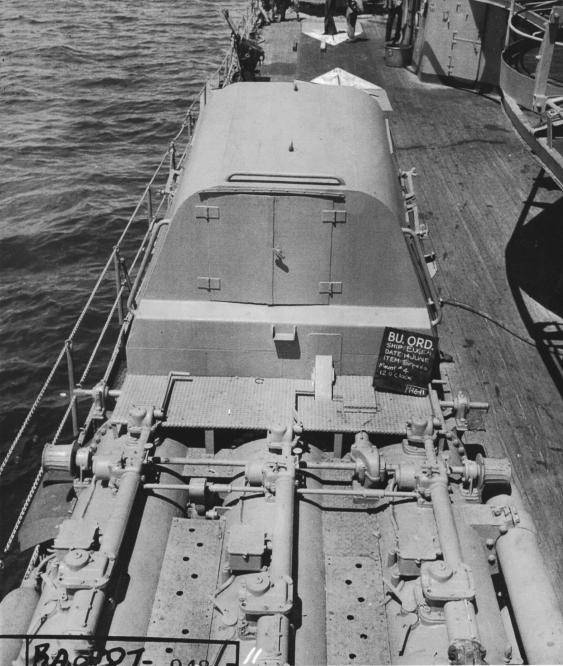
Therefore, 12 torpedo tubes on a heavy cruiser was clearly too much, since it is worth noting that the German 533-mm torpedoes are not at all Long Lance 610-mm for the Japanese. But this was done.
Radar and sonar equipment
Here, the German engineers came off in full. Two sonar systems, passive "NHG" - used for navigation purposes. The second system, also passive, "GHG", was used to detect submarines, although torpedoes fired at the ship were repeatedly detected with its help.
Further. Active system "S", analogue of the British "Asdik". A very efficient system.
Radar stations were also installed, albeit not immediately during construction, but in 1940. The first to receive the FuMo 22 were the Hipper and Blucher, which were ready at that time, the Blucher drowned with it, and during the modernization of 1941, the Hipper was equipped with two FuMG 40G radars.
"Prince Eugen" immediately received two locators of the FuMo 27 type, and in 1942 also FuMo 26 on the roof of the main rangefinder post at the top of the bow superstructure. By the end of the war, the cruiser radar set was generally luxurious: another, FuMo 25 models, on a special platform behind the mainmast, as well as the old FuMo 23 on the stern control tower. In addition, it had a Fu Mo 81 air surveillance radar at the top of the foremast.
In addition, the cruisers were also equipped with detectors for detecting enemy radar radiation. These detectors bore the names of the Indonesian islands. "Prince Eugen" had five Sumatra devices on the foremast, and then received the Timor detection system. Hipper also had Timor. Both cruisers were equipped with FuMB Ant3 Bali passive detectors.
In general, passive detectors for German ships, which usually turned out to be in the role of those who are hunted, that is, game, have turned out to be very useful. But by the end of the war, they could no longer cope, since the enemy had too many radars with different wavelengths.
Aviation equipment
The main means of non-radar reconnaissance on the cruisers was the Arado Ag.196 seaplane. A very decent seaplane, with a long flight range (1000 km) and good armament (two 20 mm cannons and three 7,92 mm machine guns plus two 50 kg bombs).
"Hipper" and "Blucher" carried 3 seaplanes each: two in single hangars and one - on a catapult. "Prince Eugen" could carry up to five aircraft (4 in the hangar and 1 on the catapult), since hangars on it and subsequent ships of the series were double. But a full aircraft package was rarely accepted, usually on ships of this series there were 2-3 seaplanes.
Despite the fashion to abandon torpedo and aircraft weapons for the sake of air defense means, the cruisers retained their Arado until the end of the war.
Combat application
"Admiral Hipper"
The baptism of fire of the "Hipper" took place on April 8, 1940, while the cruiser, along with the ships of the formation, went to capture Trondheim. The British destroyer Gloworm, which had fallen behind her squadron, accidentally ran into the Hipper, which left the British no chance.
In the course of the further battle, the German cruiser fired 31 main-caliber shells and 104 universal-caliber shells. Of these, at least one 203-mm and several 105-mm shells hit the Gloworm, but the destroyer stubbornly continued the battle.
He fired all the torpedoes, although they all passed by. As a result, the destroyer sank along with almost the entire crew, finally crashing into the cruiser. "Hipper" received 500 tons of water, but remained fully afloat.
After minor repairs, the Hipper took part in the second "naval" phase of the Norwegian operation in early June. On the morning of June 9, the British armed trawler Juniper (105 tons), and a little later the military transport Oram (530 brt), sank the British armed trawler Juniper (19 tons) with 840-mm Hipper guns.
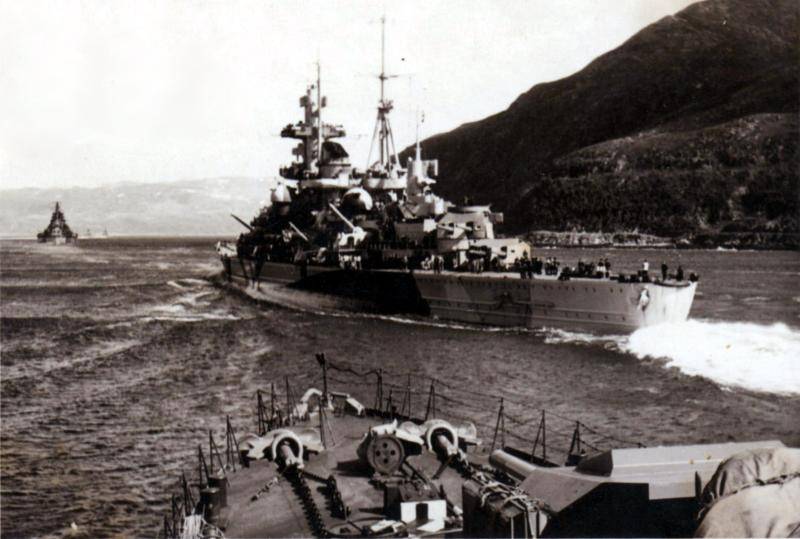
With equal rivals, "Hipper" fought on December 25, 1940 near the Azores. This was the escort of convoy WS.5A, one heavy and two light cruisers. The Germans managed not to notice the guard, in which the aircraft carrier "Furies" was still going, and only discovered the British when they opened fire on the transports.
As a result, "Hipper" left, however, having pretty much ripped open the heavy cruiser "Berwick" with shells. Three hours later, the Hipper met and sank the transport Jumna. Not a very big success.
But in the next cruise, the cruiser sank 8 transports with a total capacity of 34 brt in two weeks of raiding.
The next fight "Hipper" took place only in 1942. It was a sad for the Germans "New Year's Battle" of the detachment of Admiral Kummetz (the detachment included the cruisers "Hipper" and "Lutzov" and six destroyers) with the convoy JW-51B on December 31, 1942.
In disgusting weather conditions and with a broken radar, the Hipper first seriously damaged the destroyer Onslow, which was out of action. Further, the Germans sank the minesweeper Bramble, mistaking it for a destroyer. Then the destroyer Ekeites was sent to the bottom.
But then two light cruisers, Sheffield and Jamaica, approached, and the battle turned into a disgrace, because the British finished off the Hipper very well, which took about 1000 tons of water at low speed and left the battle, hiding behind bad weather. "Lyuttsov" actually did not participate in the battle, so two light cruisers in fact drove two German heavy cruisers and sank the destroyer "Dietrich Ekoldt".
After that, "Hipper" was sent to the reserve, where he stood for two years. On January 1, 1945, the cruiser was withdrawn from the reserve, and on January 29 she headed for Kiel, where on February 2 she was put into dry dock. But they did not have time to repair the ship, because the British blew it to shreds during a raid on May 3, 1945.
"Blucher"
Loser ship. He died in the very first combat clash, without really inflicting damage on the enemy, while crossing the Oslofjord on the morning of April 9, 1940.
First, two 280-mm shells from the Norwegian coastal battery "Oskarborg", then two dozen 150-mm shells from the battery "Kopos", fired at close range, and then two more 450-mm torpedoes. On this "Blucher" ended, when the fires detonated the artillery cellar.
"Seydlitz"
They built slowly. They even wanted to sell it to the Soviet Union, since we were not averse to buying. Hitler finally banned the sale in 1939, and work resumed. By May 1942, the cruiser was almost completed, but by this time the large surface ships of Germany were finally out of favor with Hitler, and work was stopped.
Who came up with the fierce idea of turning a 90% complete cruiser into an aircraft carrier is difficult to say, but this idea was approved. The aircraft carrier could seriously facilitate the work of the German raiders against the convoys that were covered by the aircraft carriers.
It was decided to remove the main battery artillery, rebuild the deck and change the design of the hull above the armor belt. The ship was to receive 5 paired 105-mm anti-aircraft guns, four 37-mm twin guns and five 20-mm "firlings". The hangar was supposed to accommodate 18 aircraft.
As a result, the disfigured cruiser stood in Konigsberg until January 29, 1945, when it was blown up. After the war, it was raised and cut into metal.
"Lyuttsov"
Its story never began, as the ship was sold to the Soviet Union in an unfinished state. The history of Petropavlovsk is a separate topic.
"Prince Eugen"
The debut was not very impressive: without starting to fight, the cruiser received the first "hello" from the British on July 2, 1940, namely a 227 kg bomb, which sent the ship for minor repairs.
The first normal battle of the cruiser took place on the morning of May 24, 1941 in the Danish Strait. Eugen's shells hit the Hood and then the Prince of Wales.
On July 2, 1941, exactly one year later, while standing in dry dock in Brest, "Eugen" again got hit by a 227-mm aerial bomb - this time a semi-armor-piercing one. The bomb pierced the deck (80 mm of armor) and exploded in the electric generator room, at the same time destroying the bow artillery computer located above it and damaging the central post. 61 people died, the repair of "Eugen" took another six months.
On February 12, 1942, Eugen, breaking through from Brest to Germany, knocked out the destroyer Worcester.
On February 23, on the way to Trondheim, Eugen received a torpedo from the British submarine Trident. Until the end of 1942, the ship was repaired in Kiel, and then fought in the Baltic, firing at Soviet troops on land. The cruiser fired a large number of shells (about 900), but the most interesting was ahead.
Returning to the base to replenish supplies, "Eugen" in the fog rammed the light cruiser "Leipzig" that had just been out of repair, which was out of order until the end of the war. The Eugen itself was under repair until mid-November. Then the cruiser again fired at the Soviet troops until the ammunition was used up.
The last time "Prince Eugen" had a chance to shoot in late March and early April 1945 from his parking lot in the Danzig area. On April 20, Eugen, having completely used up the main battery, arrived in Copenhagen, where she surrendered on May 9.
Further, the cruiser went to the Americans, who took him to the Kwajalein atoll, where Eugen took part in the testing of three atomic charges.
What can be said in the end?
As a result, the Germans made a serious claim for an excellent ship. But it's safe to say that the masterpiece didn't come out.
The booking was completely unsatisfactory. American, Italian, French ships were all better armored. Even light cruisers with 152 mm guns posed a threat to the Hippers.
The power plant did not provide high qualities, seaworthiness can be considered satisfactory, but nothing more.
Yes, the fire control systems were unmatched. They were just great. The complete duplication of the KDP and computing centers of the main and anti-aircraft caliber and their equipment with high-class optics and equipment gave the Hippers a huge advantage over their classmates.
But the planes, 12 torpedo tubes, spare torpedoes and all other equipment were simply useless cargo that was never really used.
Sources:
Kofman V. L. Heavy cruisers of the "Admiral Hipper" type.
Kofman V.L. Princes of the Kriegsmarine. Heavy cruisers of the Third Reich.
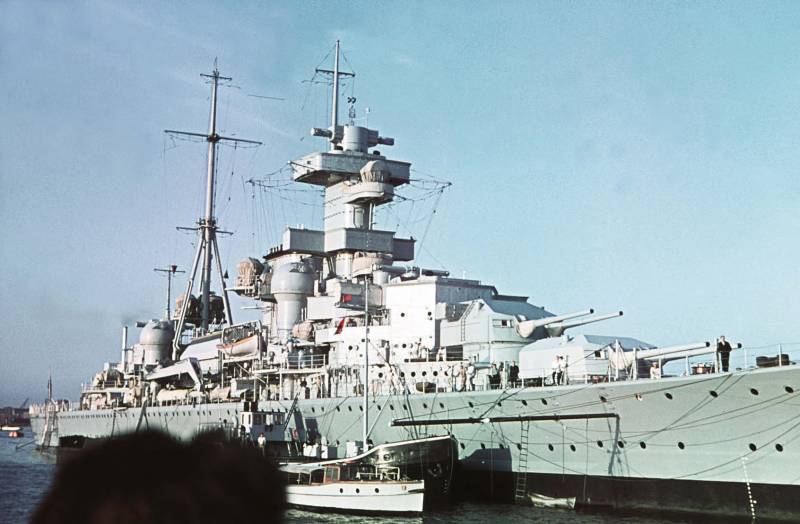
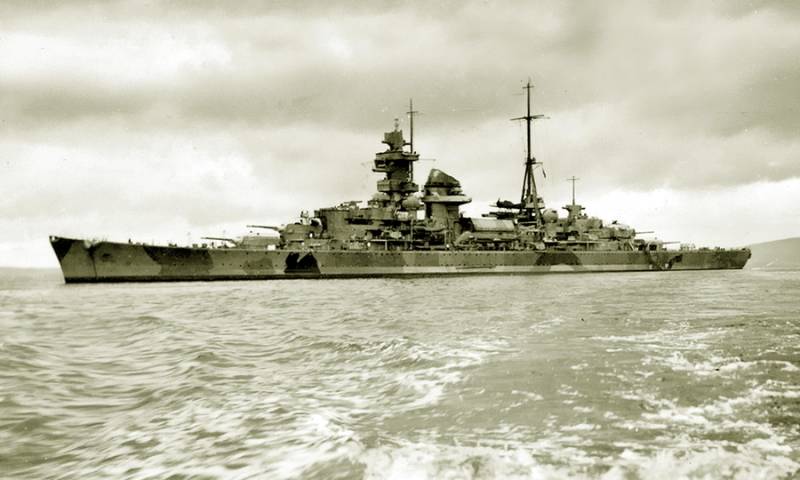
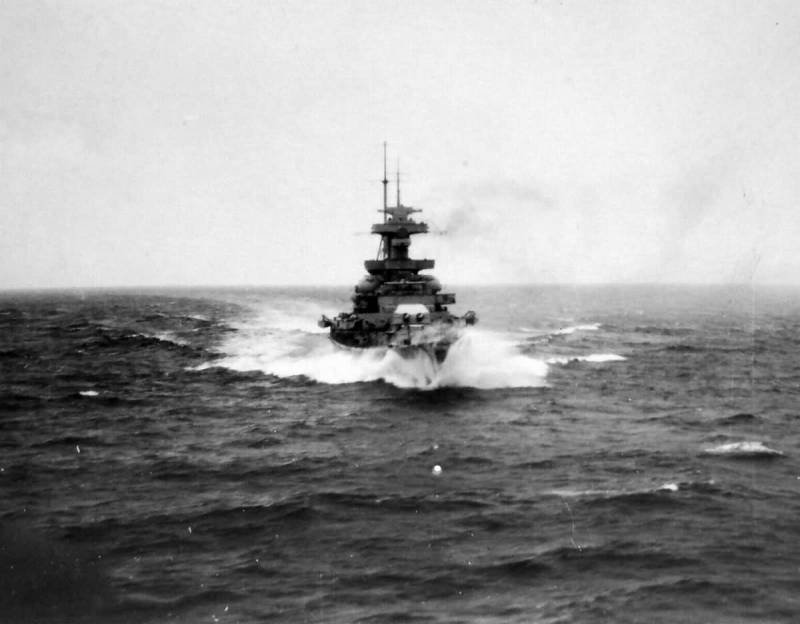
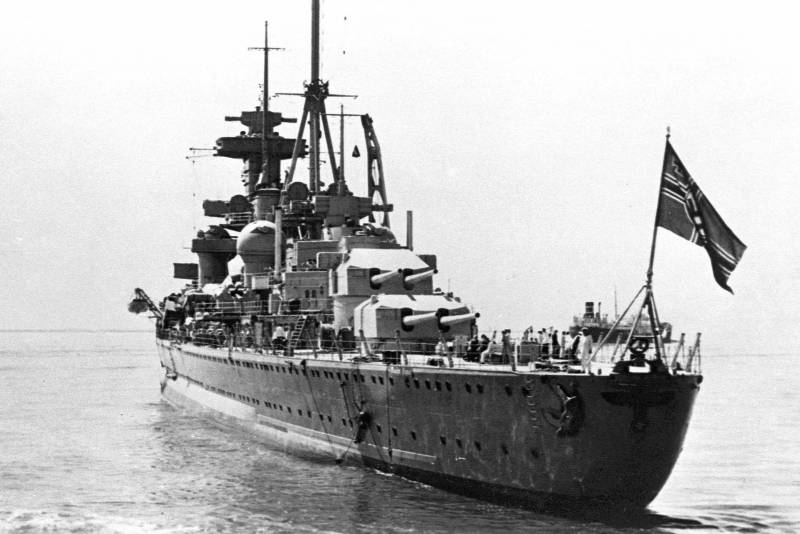
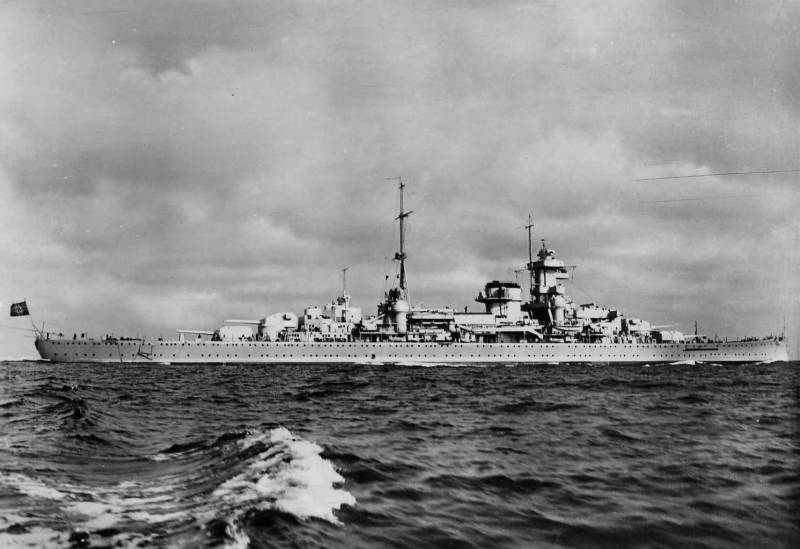
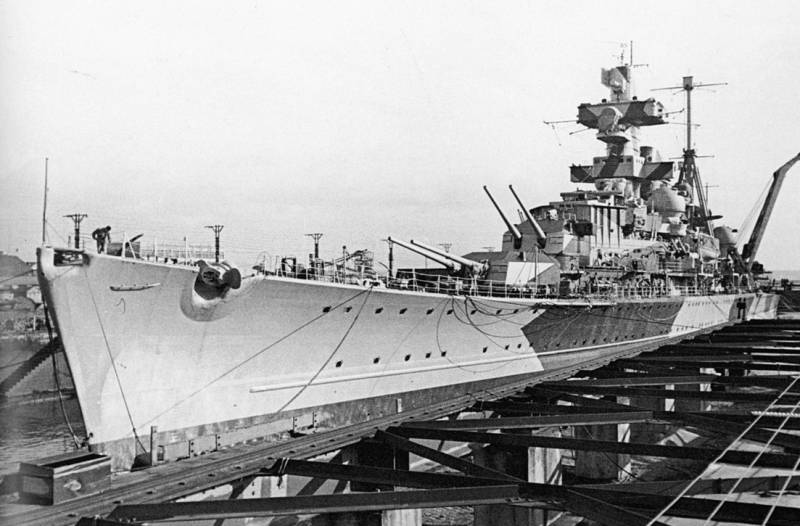
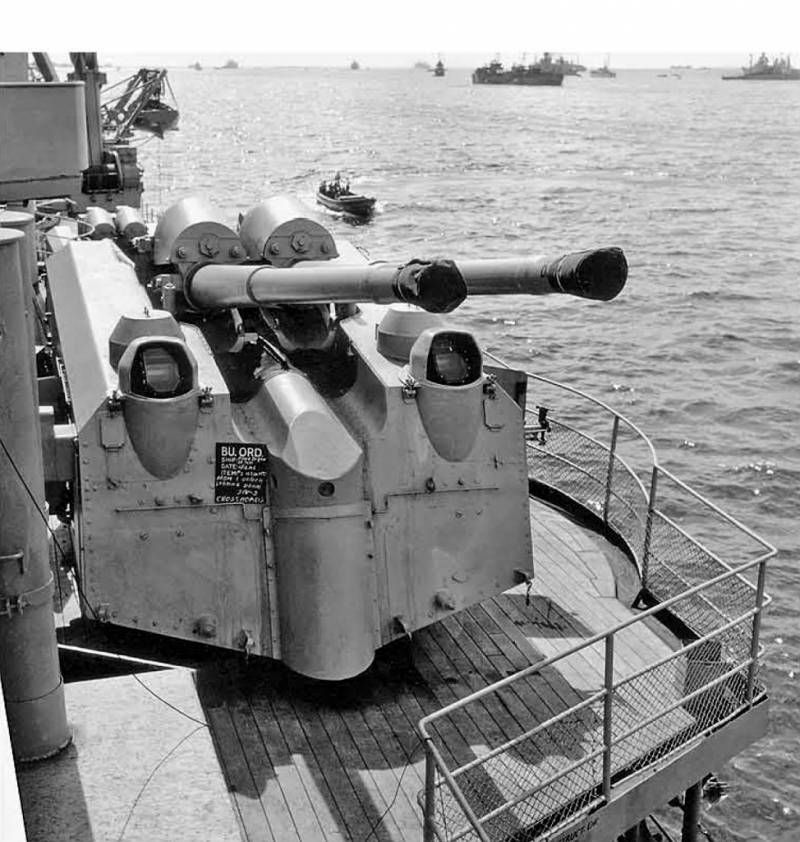
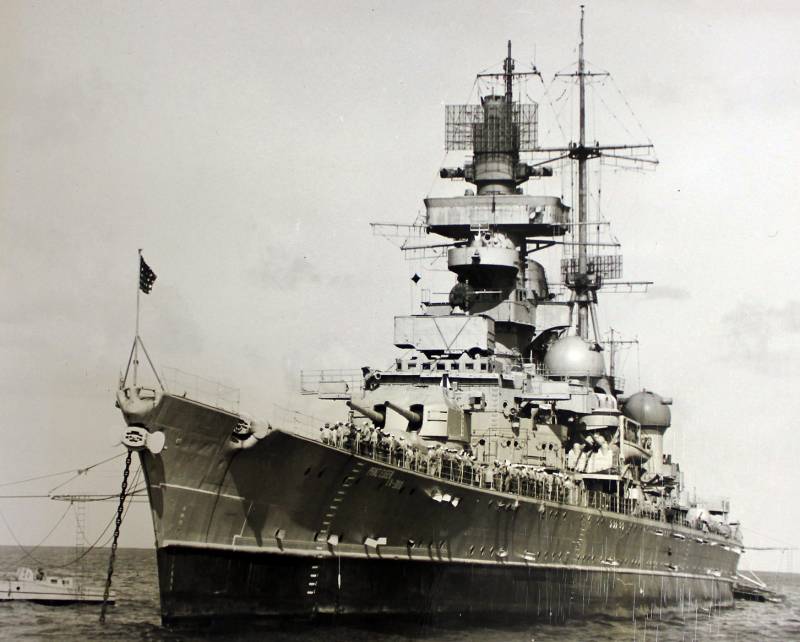
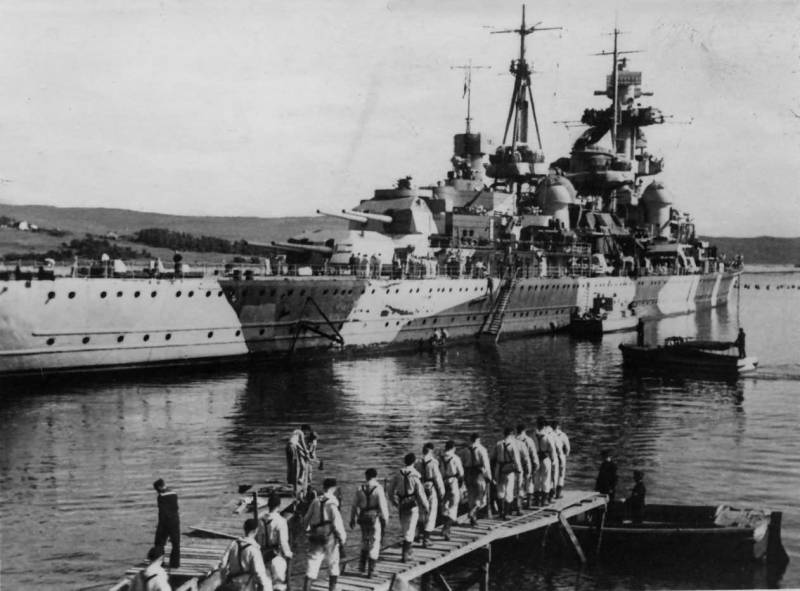
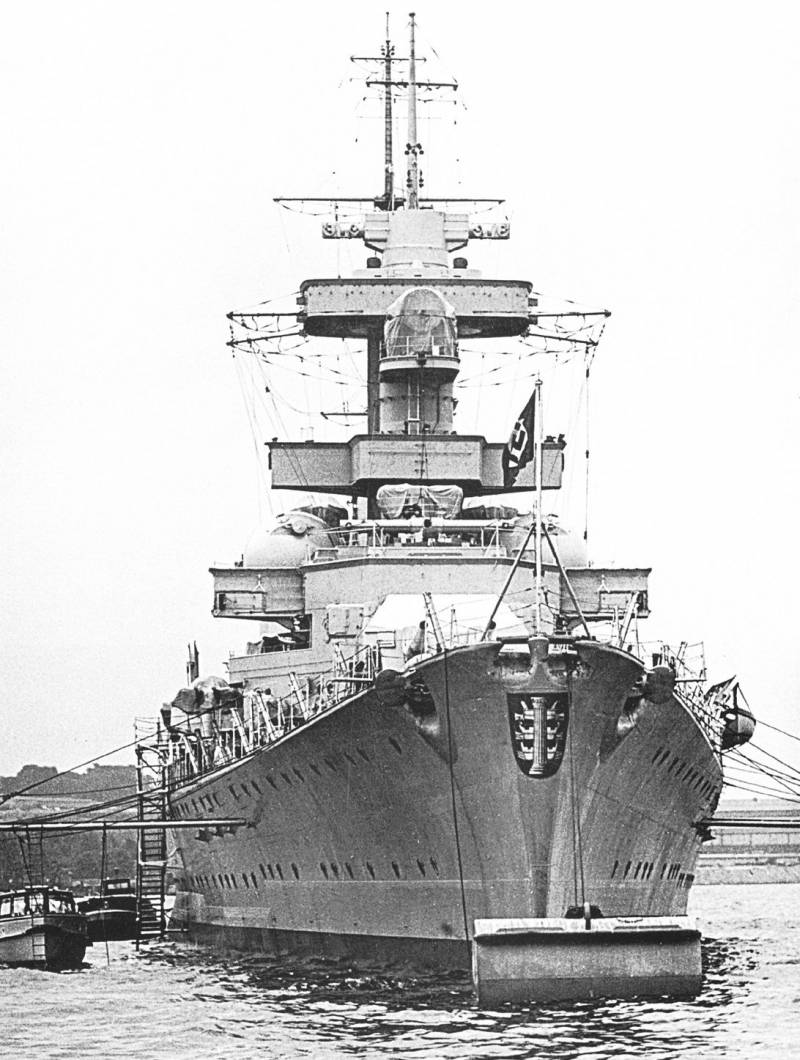
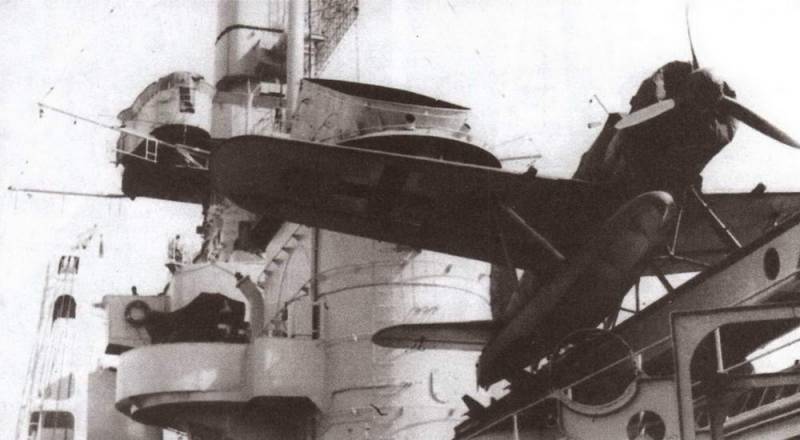
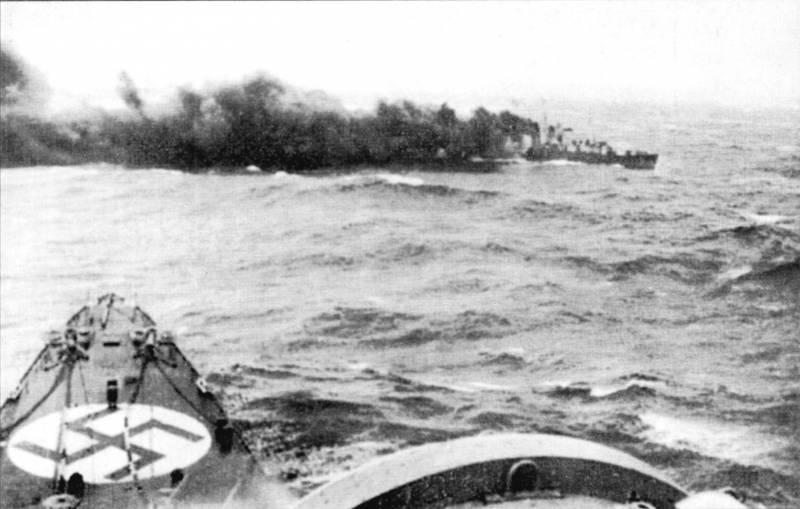
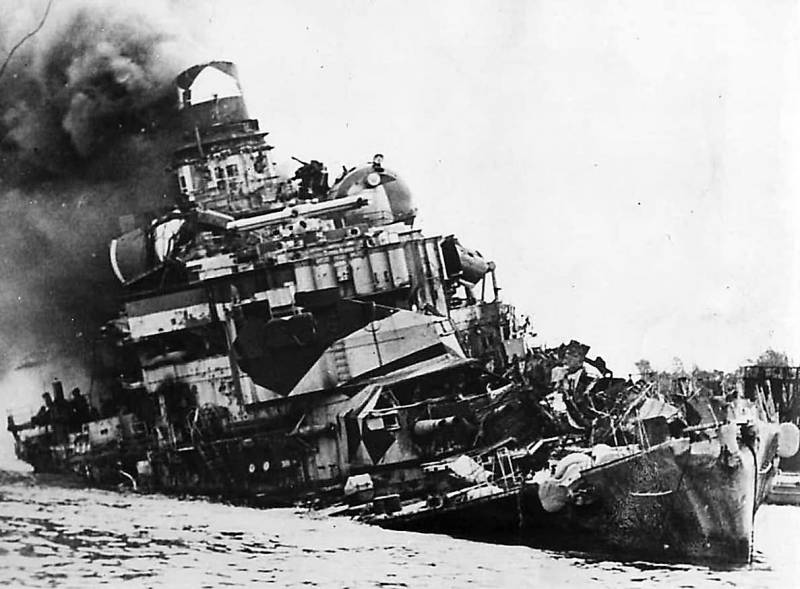
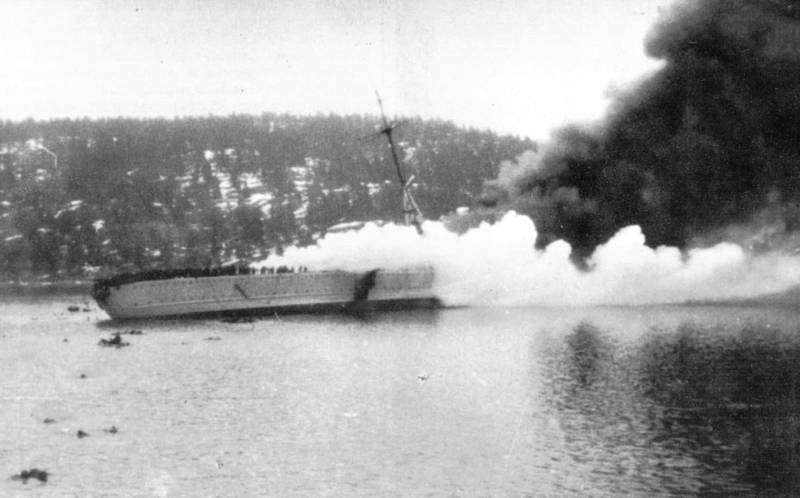
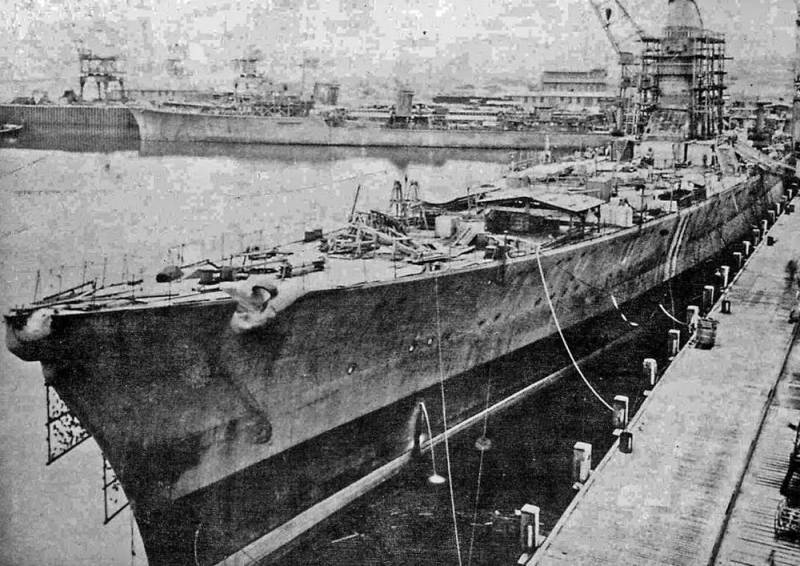
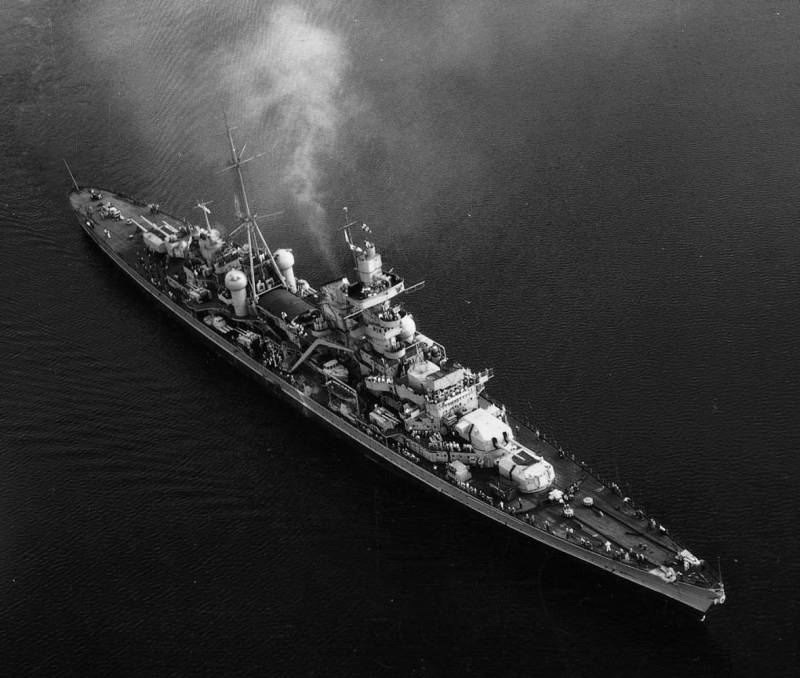
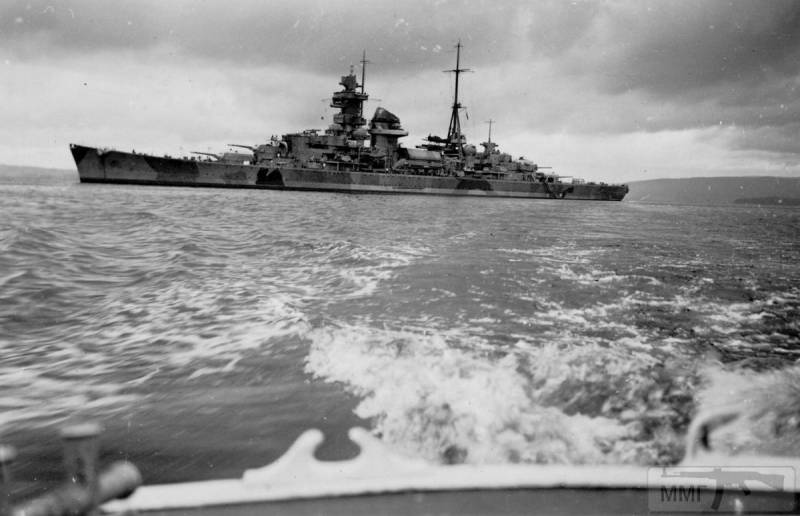
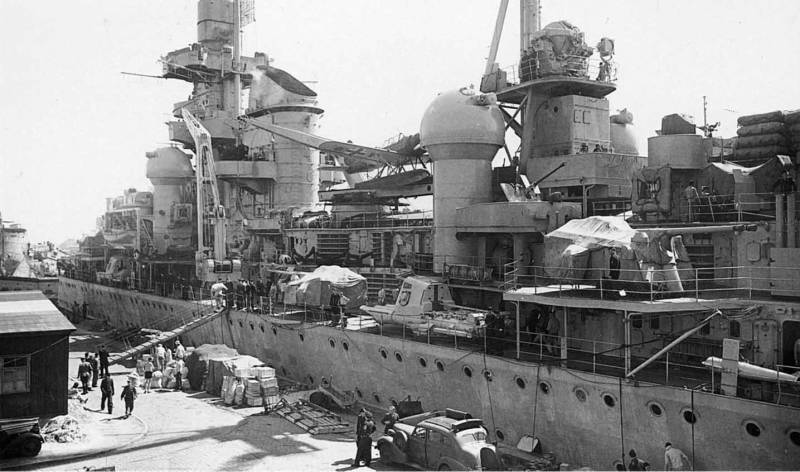
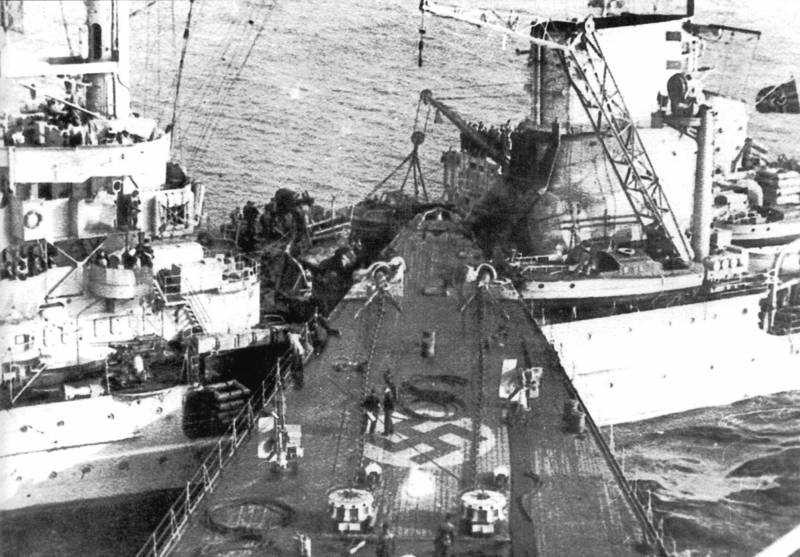
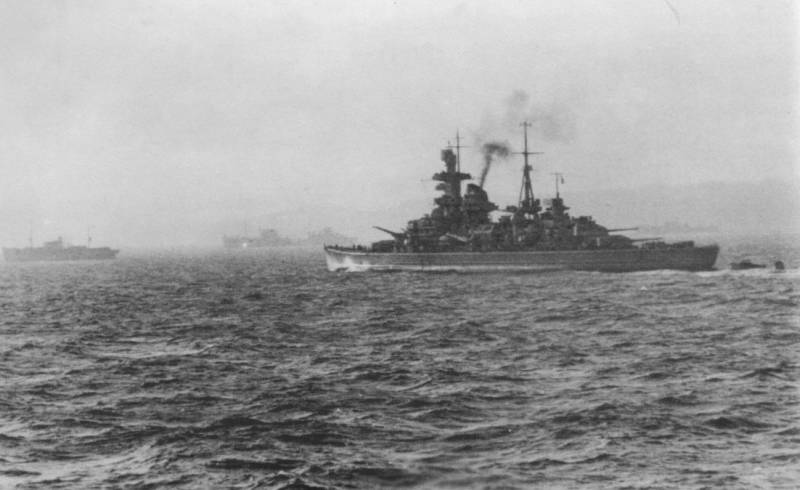
Information